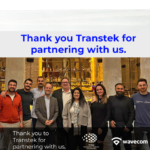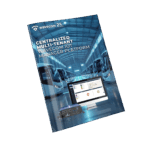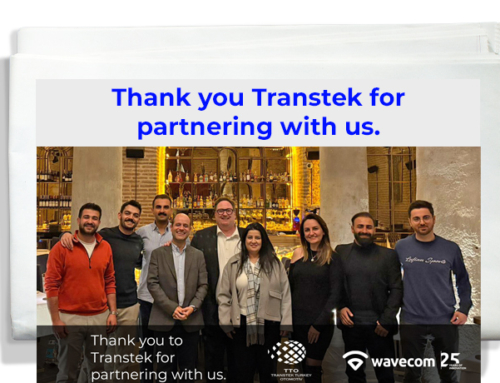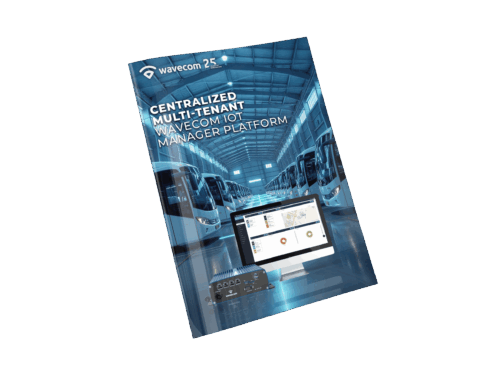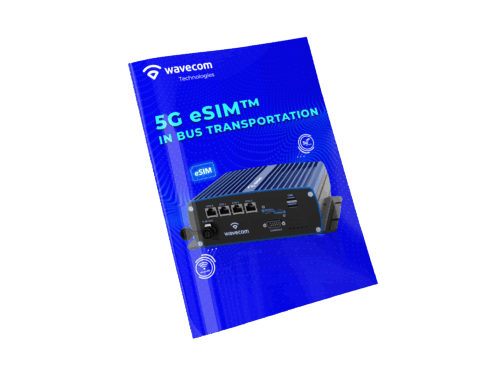WHITE PAPER
Connected Bus by Wavecom
Episode 3 – Minimal Time and Reduced Operating Costs
ZTP (Zero-Touch Provisioning) reduces operational costs by automating configuration steps and software updates in Connected Bus modular Gateways. This process minimizes the amount of time spent on the Bus Operator Site, particularly if its fleet has many bus vehicles. In addition, it reduces the skill level required by the System Integrator’s staff and, consequently, the cost.
The Connected Bus Project/Delivery/Purchase, defines the basic requirements/functionalities, which will be the basis for the system image software configured in the Wavecom Technologies environment, to be installed in modular Gateways.
Overall, ZTP improves provision and deployment of a Wavecom Technologies Connected Bus solution, resulting in a minimal time and reduced operating costs for Systems Operators.
Introduction
ZTP (Zero-Touch Provisioning) reduces operating costs by automating configuration steps and software updates in Connected Bus modular Gateways. This process minimizes the amount of time spent on the Bus Operator Site, particularly if its fleet has many bus vehicles.
In addition, it reduces the skill level required by the System Integrator’s staff and, consequently, the cost.
The Connected Bus Project/Delivery/Purchase, defines the basic requirements/functionalities, which will be the basis for the system image software configured in the Wavecom Technologies environment, to be installed in modular Gateways.
ZTP enables Systems Integrators to deploy networking devices such as modular Gateways without manual intervention, resulting in a minimal time and reduced operating costs as depicted in Figure 1.
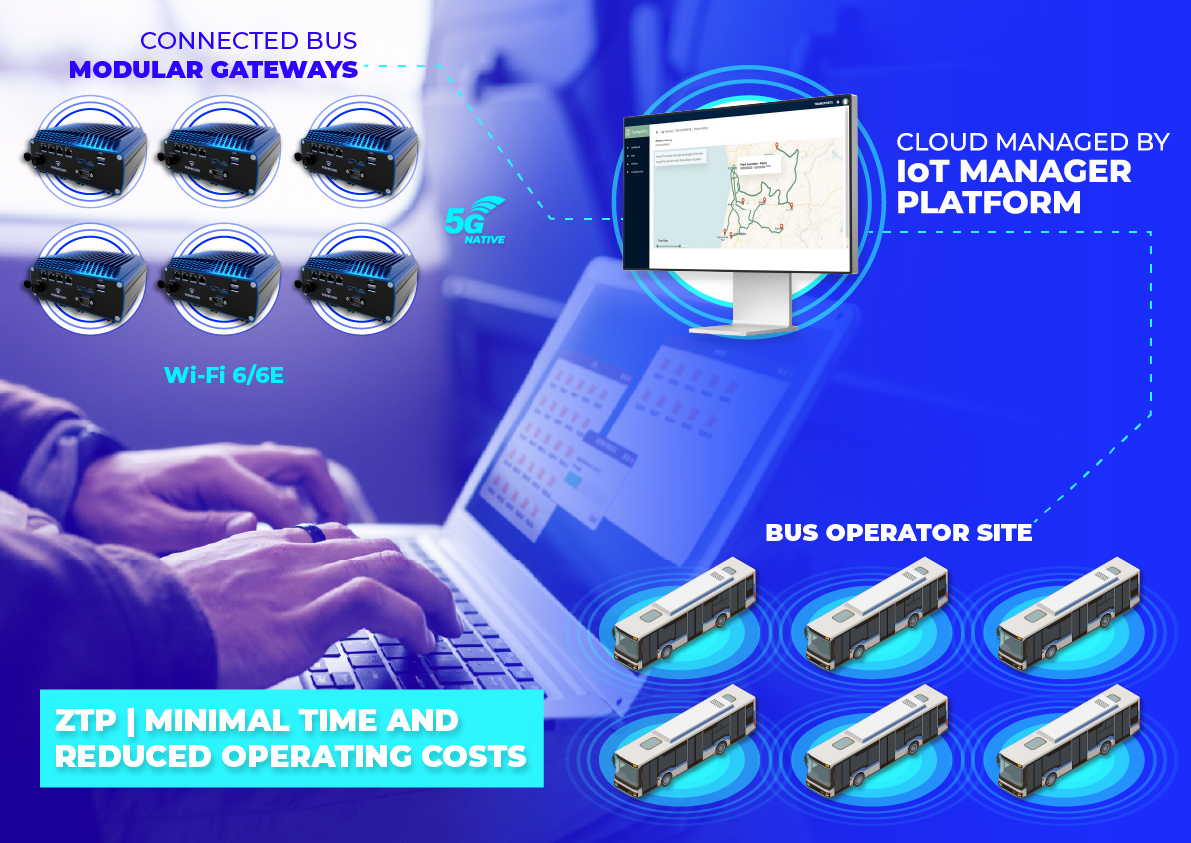
Minimal Time and Reduced Operating Costs
ZTP supports Systems Integrators scale the secure and easy way, thanks to automation provided by system image software installed in modular Gateways. They no longer need to manually configure so many resources, and they can instead count on virtually hands-free provisioning.
Wavecom Technologies provides two types of system image software for two different scenarios:
- Customized for a specific Project/Delivery/Purchase, already defined according to requirements and functionalities ordered by the Bus Operator. This includes pre-configuring the cellular network and ports, ensuring secure connectivity both outbound and locally.
- Generic with a set of basic configurations, that enables the modular Gateway to work at least as a Wi-Fi Router.
In any of the scenarios, the system software images already have the configuration of the VPN tunnels that connect the equipment to the IoT Manager/Multi-Tenant Platform. Any factory settings made by default on the modular Gateways will remain centrally manageable.
Every part of the deployment process — before, during, and after — is effortless for Systems Integrators, when it is automated with ZTP, as presented below.
Bus Operator Site
- Because ZTP requires only physical installation. Hence, System Integrators can simply put minimal (even inexperienced) staff on Bus Operator Site, which significantly cuts their operating costs.
Modular Gateway Setup
- All System Integrators need to do is rack, connect, and boot modular Gateways, and ZTP’s scripts (system image software) are in charge to do the rest.
Deployment and Maintenance
- Keeping each deployment running smoothly is simple and can be done remotely. ZTP lets System Integrators free-up staff thanks to automated updates, patching, and other changes, Cloud managed by IoT Manager/Multi-Tenant Platform.
ZTP helps Systems Integrators quickly and automatically provision and deploy network devices such as modular Gateways in a large-scale environment such as Bus Operators’ fleets, eliminating most of the manual interaction involved. It also eliminates the operating cost of troubleshooting and extra Bus Operator Site visits that are likely to result from errors that occur in manual provisioning processes.
This way, System Integrators reduce support costs, eliminate errors & inconsistencies, and streamline every deployment.
ZTP speeds up the time to deploy a new Bus Vehicle’s modular Gateway and provisions new services. Furthermore, faster service activation times mean Bus Operator can be charged and start paying for services sooner, resulting in a corresponding increase in System Integrator’s revenues.
Overall, ZTP improves provision and deployment of a Wavecom Technologies Connected Bus solution, resulting in a minimal time and reduced operating costs for Systems Operators.
IoT Manager/Multi-Tenant Platform
IoT Manager/Multi-Tenant Platform allows Systems Integrators to speed up deployments, optimize operations and maintenance in order to improve the quality, and reduce operating costs.
IoT Manager/Multi-Tenant Platform provides a cloud managed ZTP system multi-tenant approach, as it allows the System Integrator to manage multiple Connected Bus modular Gateways.
This platform can provision, update and configure modular Gateways for Systems Integrators wherever the Bus Operator’s fleet is, if it is connected to WAN.
In addition to ZTP fully automating provisioning and deployment on modular Gateways, there are many benefits, three of which stand out:
Saves time and cost
Configurating many modular Gateways in the Bus Operator’ fleet with hundreds or thousands of bus vehicles to be deployed, the use of ZTP helps to set up faster without requiring manual configuration one by one, thus saving time and costs.
Avoids opportunities of human error
Manual configuration is prone to human error. If errors occur during provisioning, the launch of the Connected Bus may be delayed causing constraints in the Bus Operators’ operation. ZTP helps to eliminate it by avoiding human errors that occur due to repetitive manual tasks typing in the CLI (Command Line Interface).
Configuration consistency
With ZTP, the configuration across modular Gateways will be consistent rather than site-specific configuration.
Provisioning and Deployment Tasks
As presented below in Table 2, while the physical installation, powering, and cabling will continue to require personnel on Bus Operator Site, ZTP enables the remaining tasks, including establishing connectivity, device configuration or software upgrade, to be automated.
Physical install, power, and cabling
- Manual – System Integrator’s Engineer on Bus Operator Site
- Zero Touch Provisioning – System Integrator’s Technician
Modular Gateway configuration
- Manual – System Integrator’s Engineer on Bus Operator Site
- Zero Touch Provisioning – Automated
Software upgrade
- Manual – System Integrator’s Engineer on Bus Operator Site
- Zero Touch Provisioning – Automated
In addition, the deployment of the Connected Bus solution can be completed by the less skilled System Integrator’s staff.
Connected Bus – ZTP Scenarios
Wavecom Technologies provides two types of system image software for two different scenarios:
- Customized for a specific Project/Delivery/Purchase, already defined according to requirements and functionalities ordered by the Bus Operator. This includes pre-configuring the cellular network and ports, ensuring secure connectivity both outbound and locally.
- Generic with a set of basic configurations, that enables the modular Gateway to work at least as a Wi-Fi Router.
In any of the scenarios, the system software images already have the configuration of the VPN tunnels that connect the equipment to the IoT Manager/Multi-Tenant Platform, as illustrated in Figure 2.
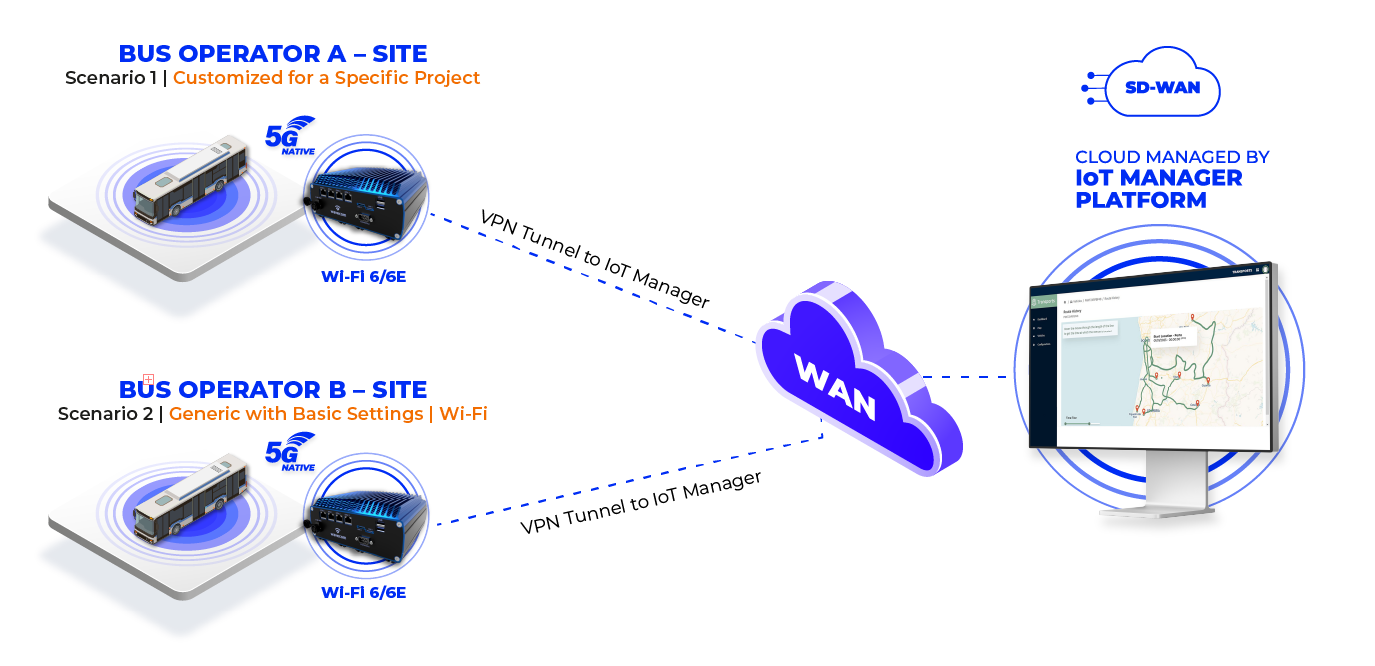
In both scenarios, by adding multiple modular Gateways at once to a Bus Operator Site, ZTP makes this task easier, saving time and money for Systems Integrators, by automatically provisioning them.
Conclusion
At the end of Episode 3, it is expected you as a System Integrator to know:
- we provide a Zero-Touch Provisioning tool cloud managed by IoT Manager/Multi-Tenant Platform that improves the efficiency of provisioning and deploying of a Connected Bus solution.
- how ZTP improves provision and deployment of a Wavecom Technologies Connected Bus solution, resulting in a minimal time and reduced operating costs.
The next White Paper, Episode 4 – Cloud Managed | Reliability and Resilience, will cover the main role of IoT Manager/Multi-Tenant Platform in Reliability and Resilience of a Connected Bus solution installed in a fleet of a Bus Operator.
It’s coming, so stay tuned.


